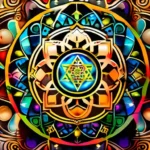Exploring the unique characteristics and practices of major religions and other belief systems.
In this comprehensive guide, we delve into the fascinating world of religion and beliefs, comparing and contrasting the major religions with other belief systems. From ancient traditions to modern-day spirituality, join us as we explore the similarities and differences that make each unique.
The Origins and Evolution of Major Religions
Imagine stepping back into time, where major religions like Christianity, Islam, Hinduism, Buddhism, and Judaism first took root. How did they emerge from simple origins to shape civilizations? Let’s delve into their historical roots and evolution.
Christianity, for instance, began with a small group of followers in Palestine, under Roman rule. It quickly spread through the teachings of Jesus Christ and his apostles. Is it surprising that such a religion could grow from a single man’s message to one that now spans continents?
Muslims, on the other hand, trace their origins back to Mecca in the 7th century. The life of Muhammad became the foundation for Islam, and its principles rapidly spread through trade routes and conquests. Can you imagine how a single revelation transformed into an empire?
Hinduism, with its complex pantheon of gods and goddesses, has evolved over thousands of years in India. It’s not just a religion but a way of life, deeply intertwined with culture and philosophy. Does the concept of dharma (duty or righteousness) resonate more as a code for living than mere belief?
Buddhism, born in what is now Nepal, offered an alternative to the rigid caste system of Hinduism. Its spread across Asia brought about profound changes in society and governance. Could it be that Buddha’s teachings on compassion and non-violence had a more lasting impact than initially thought?
Judaism, the oldest of these religions, dates back to ancient times, with roots deep in Egypt. It provides the historical and religious context for both Christianity and Islam. How did it transform from a small community in the Middle East into a global faith with significant influence?
The journey of each religion is as diverse as its followers are numerous. From humble beginnings to global prominence, they have evolved through centuries of struggle, conflict, and cooperation. Each one carries within its teachings not just spiritual guidance but also lessons on humanity, civility, and the quest for understanding our place in the world.
As we explore these major religions, it becomes clear that their evolution is a testament to human resilience and adaptability. They continue to shape society today, offering insights into what binds us as individuals and communities.
Other Belief Systems: A Closer Look
Have you ever wondered what sets Taoism apart from other belief systems? It’s like wandering through a vast, serene forest where every tree represents a different path. Taoism isn’t just about following a set of rules; it’s more akin to finding your way through life by listening to the natural rhythm around you.
Taoism revolves around Dao (Tao), meaning ‘the Way’ or the “path.” This ancient Chinese philosophy teaches that everything in the universe is interconnected and harmonious. By aligning oneself with this natural flow, one can achieve inner peace and balance. Practices include meditation, Qigong exercises, and embracing simplicity in daily life.
The teachings of Taoism are often represented by the famous Yin-Yang symbol, where light and darkness coexist in perfect harmony, much like the interplay between water and fire. This metaphor helps us understand that balance is key to living a fulfilling life. Unlike religions with strict dogmas, Taoism encourages individual interpretation and adaptation, making it a dynamic belief system that can be lived out differently by each person.
Confucianism, another significant belief system, offers a different perspective. It’s like navigating the complexities of social relationships in a well-structured garden where every plant and flower has its place. Confucianism focuses on ethics, morality, and proper conduct within society. Its principles, such as Ren (benevolence) and Li (proper rites), guide individuals to behave in ways that promote harmony and respect for others.
Sikhism, on the other hand, is like a vibrant river flowing through diverse landscapes. It was founded by Guru Nanak Dev Ji and emphasizes equality, love, and devotion to Waheguru. The practice of Gurdwara visits and Kirtan singing (devotional music) fosters a sense of community and spiritual connectedness. Japji Sahib, the first prayer in the Sikh holy book, the Guru Granth Sahib, is recited daily to seek guidance and enlightenment.
The Baha’i Faith is like planting seeds that grow into towering trees, symbolizing growth and unity. Founded by Bahá’u’lláh in the 19th century, it promotes the oneness of God, religion, and humanity. It encourages active participation in society and emphasizes the importance of education and moral values. The Baha’i community gathers in Mashriqu’l-Adhkar houses of worship to sing prayers and engage in spiritual discourse.
Exploring these belief systems broadens our understanding of the diverse ways people seek meaning and connection. Each offers unique insights into human nature, spirituality, and social interactions. By delving into their practices and philosophies, we gain a richer appreciation for the tapestry of beliefs that shape our world.
The Role of Rituals and Practices
The Role of Rituals and Practices: A Deep Dive
Imagine walking into a quiet sanctuary, the soft sound of water trickling and the rhythmic chanting creating a serene environment. Is it a Buddhist temple, or could it be an Islamic mosque? The difference lies in the rituals performed and the beliefs they reinforce. In this chapter, we’ll explore the unique characteristics and practices associated with major religions and other belief systems.
In Buddhism, meditation is not just a practice but a way of life. It’s like tending to a garden; you have to regularly nurture it to see growth. Just as monks spend hours in contemplation, seeking enlightenment, followers might engage in mindfulness exercises daily to find inner peace. The act of chanting or reciting sutras serves as a reminder and a connection to the broader community.
Islam offers its faithful a rich tapestry of rituals. Fasting during Ramadan is more than just abstaining from food; it’s a spiritual cleansing, akin to scrubbing away the grime of daily life with a gentle yet thorough brush. The Hajj pilgrimage is another profound practice that unites Muslims worldwide, symbolizing the submission and unity in faith much like a river gathering its tributaries into one strong current.
For Jews, the act of lighting Shabbat candles marks the transition from the mundane to the sacred. It’s a moment when time pauses, and the soul can breathe deeply. The Seder during Passover is a feast filled with symbolic acts that tell the story of liberation. Each piece of matzah or bitter herb holds a weighty memory, much like the stories we carry in our hearts.
In Hinduism, the practice of Puja involves offering prayers and gifts to deities. It’s not just about worship but a dialogue between human and divine, as if setting up a conversation to seek blessings. The chanting of mantras is another powerful ritual, believed to have the ability to purify the mind and soul, akin to cleaning the slate before starting afresh.
While these rituals may seem foreign or unfamiliar, they are deeply rooted in the values and beliefs of their respective communities. They provide a framework for understanding not just what believers do but why they do it. Each practice is a window into the soul of its religion, revealing the essence of faith through acts as simple as lighting a candle or as complex as embarking on a pilgrimage.
Beliefs About the Afterlife
How do different religions envision life after death? It’s like looking into a mirror, but each reflection is unique. In Christianity, for instance, believers often talk about the resurrection and eternal life in heaven. Is it really just a place to dwell forever, or does it hold deeper meanings about the soul’s journey? Contrast that with Hinduism, where the concept of reincarnation plays a central role—souls cycle through lives until they achieve enlightenment. Could this be seen as a never-ending dance of existence and non-existence?
Muslims believe in a judgment day where souls are weighed for their deeds, leading to paradise or hell. Is this a way to ensure moral accountability and societal order? In Buddhism, the cycle of birth, death, and rebirth is guided by the law of karma. How does one break free from this endless loop? And what about the beliefs in indigenous cultures where spirits are thought to roam the earth even after death—doesn’t that make our understanding of life and death more expansive?
Each religion paints a picture, but is there any common thread? Perhaps it’s about finding meaning beyond the physical world. But how do these beliefs impact daily life? Does contemplating the afterlife in such different ways influence people’s ethical decisions and behaviors?
The Impact of Religion on Society and Culture
How has religion shaped our world? It’s like asking how the sun shines through the leaves, casting its light and warmth upon everything below. Religion has been the bedrock of societies, influencing every aspect from art to politics. Have you ever wondered why some of the most magnificent works of art were created in the name of divine inspiration? Or why certain historical events are intertwined with religious narratives?
Take the Renaissance, for instance. It’s often hailed as a rebirth of learning and creativity, but it was also deeply rooted in Christian theology. Artists like Michelangelo and Da Vinci channeled their spiritual beliefs into their masterpieces, creating not just art, but a visual language that spoke to the soul. Isn’t it fascinating how these works still resonate with us today, centuries later?
Religion has also played a crucial role in political landscapes. Think of the American Revolution or the French Revolution. Both were influenced by religious ideologies and the quest for freedom, whether it was freedom from British rule or the divine right of man to govern himself. In both cases, religion provided a moral and ideological foundation that resonated with the masses.
But beyond these grand narratives, religion impacts us on an individual level too. It shapes our values, our sense of community, even our daily choices. How many times have you seen people come together in prayer or meditation, seeking solace and strength? Religion offers a framework for understanding life’s complexities, providing comfort during trials and joy during celebrations.
Yet, as societies evolve, so do the roles of religion. In the digital age, where information is abundant yet often fragmented, religion still stands as a unifying force. It teaches us to find common ground in diversity, to respect different viewpoints while seeking shared values. By exploring these differences, we gain deeper insights into our own beliefs and the world around us.
Finding Common Ground: Unity in Diversity
Imagine walking through a vast forest where each tree represents a different belief system, and among them stands the majestic temple of major religions like Christianity, Islam, and Hinduism. Now, what if we could find common ground, like branches intertwining to form a dense canopy overhead? This metaphor symbolizes how diverse belief systems share fundamental values that can unite us all.
Major religions often emphasize themes such as compassion, charity, and the pursuit of peace. For instance, ‘What you do not want done to yourself, do not do to others.’ (The Golden Rule), a principle found in both Christianity and Hinduism, serves as a universal guideline for treating others with kindness and respect. This rule is like a river that flows through many belief systems, bringing people closer together despite their differences.
Moreover, the concept of service or sadhana (dedicated effort) in religions such as Buddhism and Sikhism can inspire individuals to contribute positively to society. It’s like planting a seed of hope that grows into a tree of understanding and mutual respect.
Understanding these common threads can help bridge the gaps between different belief systems. For example, when we see that many religions advocate for tolerance, it reminds us that accepting others’ beliefs is not just respectful but necessary in a diverse world. Just as flowers of various colors and shapes bloom together to create a beautiful garden, so too can different belief systems contribute to the richness of human society.
The key lies in recognizing these shared values and using them to foster unity. By focusing on what we have in common rather than our differences, we can build stronger communities where everyone feels valued and respected. After all, it’s not about converting others but about creating an environment where diverse beliefs coexist harmoniously.
So, let us embrace the unity found in diversity by celebrating the unique paths each of us walks on our spiritual journey. Together, we can build a world that is not just tolerant but truly inclusive, where every voice is heard and every belief respected. This is the essence of finding common ground in a world filled with myriad beliefs.
Conclusion
 By understanding the nuances between various religious and belief systems, we can foster greater empathy, respect, and tolerance in our increasingly diverse world.
By understanding the nuances between various religious and belief systems, we can foster greater empathy, respect, and tolerance in our increasingly diverse world.











